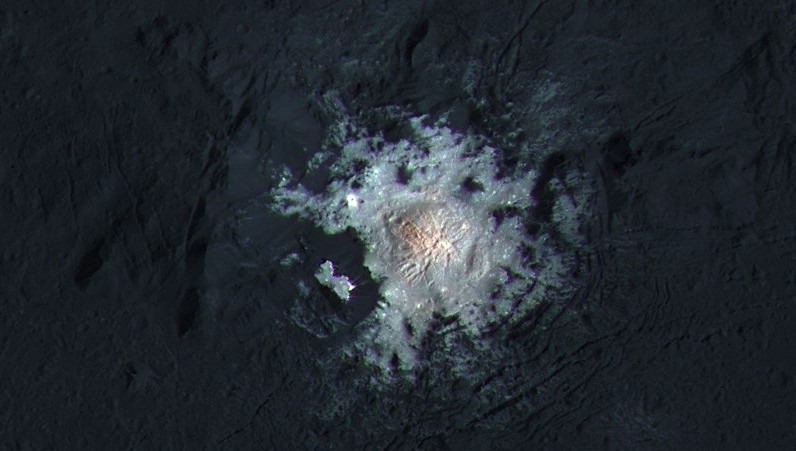Evidence of a close encounter might be closer than you think. A 57-mile-wide crater on dwarf planet Ceres has bright spots on it that change every time NASA’s Dawn spacecraft photographs them. Though they appear similar to lights on Earth, scientists believe the spots to be ice-rich areas of magnesium sulfate left over from a time when Ceres was covered with ice. The bright areas in Occarator Crater, as it’s called, are the strongest on the dwarf planet.
With each pass the Dawn makes, scientists get a better look at the 2.5-mile-deep crater and, with it, a better understanding of what’s going on on Ceres. “Before Dawn began its intensive observations of Ceres last year, Occator Crater looked to be one large bright area. Now, with the latest close views, we can see complex features that provide new mysteries to investigate,” said Ralf Jaumann, planetary scientist and Dawn co-investigator at the German Aerospace Center (DLR) in Berlin. “The intricate geometry of the crater interior suggests geologic activity in the recent past, but we will need to complete detailed geologic mapping of the crater in order to test hypotheses for its formation.”
To get a closer look at Ceres’ bright spots, watch the video below. Also, view images RealClearLife curated of Occator Crater and its bright spots.
This article was featured in the InsideHook newsletter. Sign up now.
























